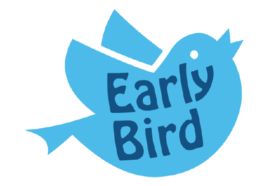Video abstract from Dr. Rhys Bevan Jones ‘Practitioner review: Co-design of digital mental health technologies with children and young people’.
Authors: Rhys Bevan Jones, Paul Stallard, Sharifah Shameem Agha, Simon Rice, Aliza Werner-Seidler, Karolina Stasiak, Jason Kahn, Sharon A. Simpson, Mario Alvarez-Jimenez, Frances Rice, Rhiannon Evans, and Sally Merry.
First published: 22 June 2020
doi.org/10.1111/jcpp.13258
Subscribe to the ACAMH YouTube Channel to be the first to see video abstracts and free lectures

Bio courtesy of Cardiff University; I am a psychiatrist and researcher at the Section of Child and Adolescent Psychiatry, Division of Psychological Medicine and Clinical Neurosciences.
In 2018, I was awarded a Post Doctoral Fellowship by the National Institute for Health Research (NIHR) and Health and Care Research Wales (HCRW) – to refine and conduct a feasibility trial of a Web-based programme for adolescent depression.
This programme was developed as part of my NIHR/HCRW Doctoral Research Fellowship (2013-2017). I have also worked on the Early Prediction of Adolescent Depression (EPAD) study, and other projects in the department.
I am particularly interested in research and clinical work from child to adult life, and mental health difficulties in this key transitional period. I am dual-trained in child/adolescent and adult psychiatry.
I am also interested in the role of visual and digital media in mental health, and have studied illustration and graphic design. I am a teaching lead for child and adolescent psychiatry at Cardiff University, and was recently a public engagement officer with the Royal College of Psychiatrists in Wales.
Transcript
Hi. My name is Rhys Bevan Jones. I’m a Psychiatrist and Researcher at the Division of Psychological Medicine and Clinical Neuro Sciences at Cardiff University. I’d like to let you know about a Practitioner Review on the co-design of Digital Mental Health Technologies with Children and Young People.
This was published recently in a special issue on Digital Mental Health, by the Journal of Child Psychology and Psychiatry. It was a collaboration with an international team of researchers in the field and we hope it helps turn form practitioners and researchers interested in the development of Digital Health Technologies.
We wrote this, because, although there’s more interest in technologies to help improve the mental health of children and young people, there’s concern about the levels of engagement, uptake and adherence. As a way of addressing this, key guidance in the development, evaluation and implementation of technologies stress the importance of early user input.
Co-design is a process of active involvement of stakeholders, or collective creativity. However, there’s a lack of guidance and literature to inform the co-design of Digital Mental Health Technologies with children and young people. We reviewed the literature and practice in this field. We completed a systematic search of technologies, designed and developed with children and young people. We contacted key authors in the field and extracted key themes on aspects relevant to the practice and processes of co-design. We supplemented this with case studies and methods reported by practitioners and researchers in the field.
We identified 25 original articles and 30 digital technologies. These targeted a range of difficulties and nearly all involved adolescence in their development. Also, around one in five involved children. Over half were developed in New Zealand and Australia and the others in North America, Europe and Asia. Most articles focused primarily on the design or development phase of the technology, rather than the evaluation or implementation phase, and the majority of these were published in recent years.
We extracted four key themes from the studies. The first is on the principles of co-design and covers the potential stakeholders involved and the stages of involvement. The second theme is on the collaborative activities and techniques to engage users. The third is on approaches to co-designing and mapping the prototype and the elements to engage the diversity and the user group.
Finally, we explored the challenges of co-design, including gaining the resources required, balancing the input of stakeholders and the evaluation of the impact of the process. The case studies and the review are based on SPARKS and Questivity Anger developed in New Zealand and Mood Hope developed in Wales.
We also present a checklist for reporting and reviewing co-design activities.
So, in conclusion, co-design involves children, young people and all relevant stakeholders, potentially throughout the life and research cycle of the program. The increase in articles over recent years suggests there’s more interest in the development of technologies and the involvement of end users. Future work will need to consider the changing face of technology, methods of engaging the diversity in the user group and the evaluation of the process and its impact on the technology.
We’d like to thank all the children, young people and other stakeholders who have collaborated with us in our studies. The review is available Open Access on the JCPPE website.
Thank you for watching.


